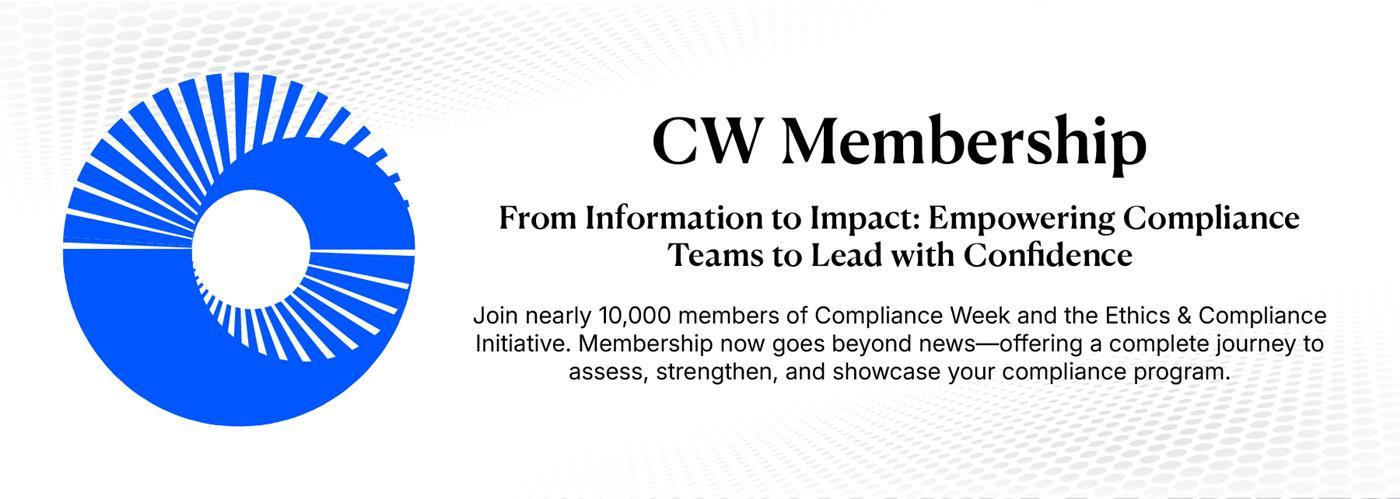- Home
-
News
- Back to parent navigation item
- News
- National Compliance Officer Day 2025
- Accounting & Auditing
- AI
- AML
- Anti-Bribery
- Best Practices
- Boards & Shareholders
- Cryptocurrency and Digital Assets
- Culture
- ESG/Social Responsibility
- Ethics & Culture
- Europe
- Financial Services
- Internal Controls
- Regulatory Enforcement
- Regulatory Policy
- Risk Management
- Sanctions
- Surveys & Benchmarking
- Supply Chain
- Third Party Risk
- Whistleblowers
- Opinion
- Benchmarking
- Certification
- Events
- Research
- Awards
-
CW Connect
- Back to parent navigation item
- CW Connect
- Sign In
- Apply
- Membership
ESG Summit: Holistic approach to supply chain risk an ‘investment differentiator’
By  Jeff Dale2022-09-22T16:51:00
Jeff Dale2022-09-22T16:51:00

Two experts explained how the C-suite as a whole—not just compliance officers—should be focused on the holistic approach to supply chain risk management during a session at Compliance Week’s virtual ESG Summit on Monday.
Alexis Huseby, vice president and research analyst of environmental, social, and governance (ESG) at Lazard Asset Management, described the holistic approach to supply chain risk management as asking the question, “Your peers are paying attention to this—are you?” She said this approach could be an “investment differentiator imperative going forward.”
From Huseby’s perspective, without buy-in from asset managers and corporations they own, a shift in the sustainability space is unlikely.
THIS IS MEMBERS-ONLY CONTENT
You are not logged in and do not have access to members-only content.
If you are already a registered user or a member, SIGN IN now.
Related articles
-
 News Brief
News BriefLawmakers pressure SEC to examine Shein’s sourcing practices before IPO
2023-05-02T19:16:00Z By Aaron Nicodemus
Two dozen lawmakers have demanded the Securities and Exchange Commission require an independent third party to verify fast-fashion retailer Shein does not use Uyghur forced labor before allowing it to go public.
-
 Premium
PremiumGood faith not good enough in navigating global supply chain laws
2023-01-23T19:24:00Z By Neil Hodge
Differences in the level of duty of vigilance among supply chain legislation in countries including the United States, United Kingdom, and Germany mean best efforts to root out and stop slave labor and other worker exploitation are not enough, according to experts.
-
 Article
ArticleU.S. law to stop Uyghur forced labor remains compliance challenge
2022-12-07T13:00:00Z By Adrianne Appel
It’s been six months since the Uyghur Forced Labor Prevention Act took effect, and businesses are no clearer today on how to comply with it, those familiar with the law said.
More from ESG/Social Responsibility
-
 Article
ArticleFrench court calls out alleged deceptive net zero claims by TotalEnergies
2025-11-12T19:38:00Z By Ruth Prickett
Regulators in Europe are focused on punishing energy firms that make deceptive claims on net zero targets, as TotalEnergies recently discovered.
-
 Article
ArticleCompliance must use AI to maximize benefits from sustainability reporting
2025-10-06T12:04:00Z By Ruth Prickett
Global pressure for sustainability reporting is rising. Despite political uncertainty and regulatory delays, companies continue to improve reports for regulators and stakeholders with the help of AI.
-
 Article
ArticleCompliance should prepare for more ESG reporting as global pressure rises
2025-09-29T20:59:00Z By Ruth Prickett
Most major organizations are not changing their ESG reporting plans, despite “regulatory ambiguity”, according to a report by consultancy KPMG. The researchers say this indicates market expectations are driving action as much as legal requirements.
- Terms and Conditions
- Privacy Policy
- Do Not Sell My Info
- © 2025 Compliance Week
Site powered by Webvision Cloud






